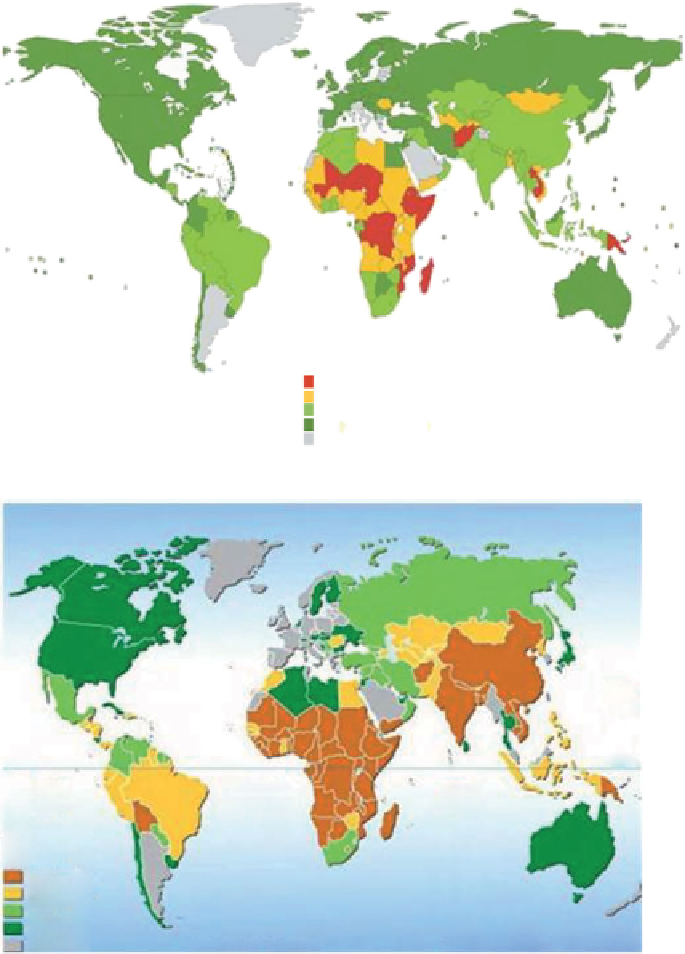Environmental Engineering Reference
In-Depth Information
(a)
Percentage of population using
improved drinking water sources
Less than 50%
50%-75%
76%-90%
91%-100%
Insufcient data
Coverage in 2002
(b)
PACIFIC
OCEAN
EQUATOR
EQUATOR
PACIFIC
OCEAN
ATLANTIC
OCEAN
INDIAN
OCEAN
Population using
improved sanitation
in percentage
Less than 50%
50%-75%
76%-90%
91%-100%
No data
Coverage in 2002
Source: World Health Organization
figurE 23.1
(a) Reduction by half of the proportion of people without sustainable access to safe drinking water and basic sanitation
between 1990 and 2015. (b) Reduction in the proportion of households without access to hygienic sanitation facilities and affordable and safe
drinking water by at least one-third.
are viewing nanotechnology as a revolutionary technology that might be able to solve many problems that have become a
concern for human society.
23.2
dEsalination
Nanotechnology could be used in water treatment for monitoring, desalinization, purification, and waste water treatment [4].
These might be some vital sectors having a significant role in coping with future water shortage [5, 6]. However, one must
understand that nanotechnology itself has its limitations of accessibility and affordability, and is not a “magic stick” to solve all
problems. Many nanotechnology-based applications are still undergoing research and development and none of them has yet
been scaled up to industry level [7]. over the last few decades, desalination technologies have been used increasingly throughout

